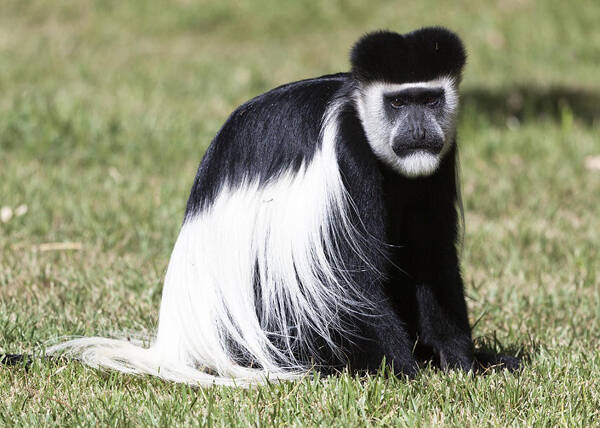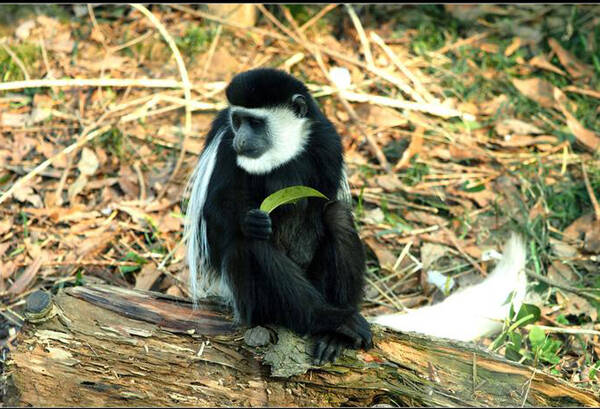Colobus guereza
IUCN
LCBasic Information
Scientific classification
- name:Colobus guereza
- Scientific Name:Colobus guereza,Guereza、Eastern Black-and-white Colobus、Magistrate Colobus,Eastern black and white colobus
- Outline:Primates
- Family:Cercopithecidae Colobus
Vital signs
- length:52.1-69.9cm
- Weight:7.8-13.5kg
- lifetime:About 20 years
Feature
There are long white hairs on both sides of the body like a cape
Distribution and Habitat
Distributed in Cameroon, Central African Republic, Chad, Congo, Democratic Republic of Congo, Equatorial Guinea, Ethiopia, Gabon, Kenya, Nigeria, Rwanda, Sudan, United Republic of Tanzania and Uganda.
Inhabits subtropical and tropical dry forests and swamps.
Appearance
The East African black and white colobus monkey has a body length of 54.3-69.9 cm for males and 52.1-67.3 cm for females. The male weighs 9.3-13.5 kg and the female weighs 7.8-9.2 kg. There are 8 subspecies. The fur color is mostly black and white, with long white hair on both sides of the body, extending from the shoulders to the entire back. With a light body and long limbs, the body is larger and heavier than ordinary monkeys. The anal wart is very small. The beautiful and elegant tail is longer than the body, sometimes more than 1 meter, divided into black and white sections, and there is often a dense tuft of white hair at the tip of the tail. The newborn monkey has all white hair, which is in sharp contrast to the adult monkey with mainly black hair. The difference between different subspecies is not only the size of the body, but also the degree of black and white and the length of the tail. The cheek pouches are also smaller than those of ordinary monkeys. The forelimbs have fo
Details
The East African black-and-white colobus (scientific name: Colobus guereza) is also known as Guereza, Eastern Black-and-white Colobus, Magistrate Colobus, and has 8 subspecies.

The East African black and white colobus monkeys live in the upper and middle layers of the forest and rarely come to the ground. The family consists of an average of 8-15 members, usually including an adult male, several females and their children who have not yet become independent. Several females will jointly feed the young monkeys in the family. The males will leave home and become independent before they become adults, while the females will stay in the family.
The East African black and white colobus monkey mainly eats young shoots and leaves of plants, but also wild fruits and grains.

The East African black and white colobus monkey can mate and reproduce all year round. The marriage is polygamous. Males are dominant in the family and can mate with any adult female in the group. The female monkey has a gestation period of five months and only one baby is born each time. The newborn baby monkey is all white. In the first few months after the baby monkey is born, whether it is the mother or not, the female monkeys in the group will help take care of and support the baby monkey, and the mother monkey will take the baby monkey everywhere to feed it. The baby monkey always hangs on its mother's chest and grasps the mother's fur. Living with the mother, the baby monkey grows the same color as the parents after 3 months, can move freely at 7 months old, and is sexually mature at around 4-6 years old.
Listed in the "World Conservation Union" (IUCN) ver: 2008 Red List of Primates - Least Concern (LC).
Protect wild animals and stop eating game.
Maintaining ecological balance is everyone's responsibility!








